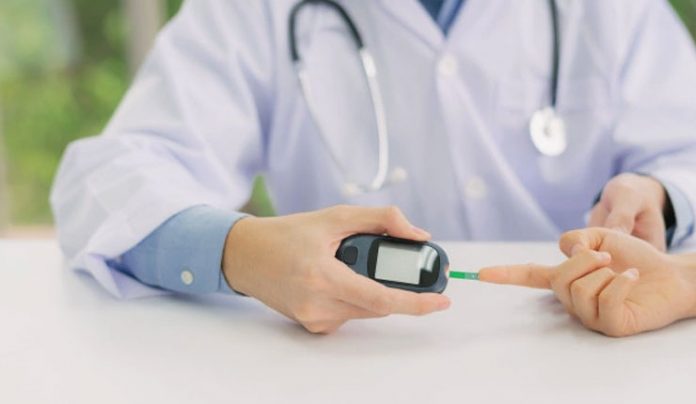
Acid reflux drugs are used to treat acid reflux, peptic ulcers, and indigestion. They are among the top 10 most commonly used drugs worldwide.
However, research says that regular use of acid reflux drugs, known as proton pump inhibitors (PPIs), is linked to a heightened risk of developing type 2 diabetes. Long term usage of these drugs increases the risk, prompting the researchers to advise that people taking these drugs for 2 or more years should have regular blood glucose check-ups to screen for diabetes. Besides, long term usage of these drugs may also increase the risk of bone fractures, chronic kidney disease, gut infections and stomach cancer.
In 2014, the global prevalence of type 2 diabetes was 8.5%, and the researchers wanted to find out if the widespread use of PPIs and the high prevalence of diabetes might be linked.
Chinese researchers drew on information from studies of more than 200,000 U.S. health care professionals and found that regular use of PPIs was associated with a 24% higher risk of developing type 2 diabetes particularly those with prolonged use. The report was published online in the Journal Gut.
The longer these drugs were taken, the greater was the risk of developing diabetes: use for up to 2 years was associated with a 5% increased risk; use for more than 2 years was associated with a 26% increased risk.
Further analysis showed that diabetes risk among PPI users wasn’t affected by sex, age, family history of diabetes, smoking, alcohol intake, diet, physical activity, high cholesterol or regular use of anti-inflammatory drugs. But it was higher among participants who weren’t overweight or who had normal blood pressure.
Based on the new findings, the researchers suggested that people taking PPIs for a long time should have their blood sugar monitored for changes that might indicate developing diabetes.
It’s important to note, however, that this study was not designed to prove a cause-and-effect relationship between PPIs and type 2 diabetes. It can only show a link between the two.
The researchers relied on data from three long-term studies of U.S. health professionals that began in the 1970s and 1980s. They drew on information supplied by 204 689 participants (176,050 women and 28,639 men) aged 25 to 75 in the US Nurses’ Health Study, which started in 1976 (NHS), the NHS II, which started in 1989, and the Health Professionals Follow-up Study (HPFS), which started in 1986.
At enrolment and every 2 years after that, participants updated information on their health behaviors, medical history, and newly diagnosed conditions. In the early 2000s, the questions expanded to include whether they had used a PPI two or more times a week.
The investigators tried to control for factors that might affect type 2 diabetes risk, including high blood pressure, weight and physical inactivity.
Besides linking regular use of PPIs to an increased risk of type 2 diabetes, the researchers found that long-term use increased the odds, too. Study participants who used PPIs for up to two years had a 5% increased risk, and the risk rose 26% for those who took the drugs more than two years.
The study authors also noted that when people stopped taking these drugs, the risk of diabetes fell, and it continued to do so even more over time.
Surprisingly, the risk of diabetes associated with PPI use appeared to be highest in people with normal blood pressure and lower weight. Typically, higher weight is a risk factor for type 2 diabetes.
The study also found a 14% higher risk of type 2 diabetes in people taking another type of heartburn medication called H2 receptor blockers (such as Pepcid, Tagamet, Zantac).
It’s unclear exactly how taking acid-reducing medications might increase diabetes risk, the researchers said. One possible way might be through altering the body’s natural balance of bacteria (microbiome), they suggested. Another possibility: PPI use may lead to weight gain that can increase the odds of diabetes. More research is needed.
A mounting body of evidence suggests that changes in the type and volume of bacteria in the gut (the microbiome) may help explain the associations found between PPI use and an increased risk of developing diabetes.
This is an observational study, and as such, can’t establish cause, but it involves many people whose health was tracked over a relatively long period, say the researchers.
However, based upon the findings, it seems reasonable to check patients who have been taking PPIs for more than two years for the development of diabetes at regular intervals. Further studies are required to determine what that interval should be.
Given the range of side effects and the heightened risk of diabetes, doctors should carefully weigh up the pros and cons of prescribing these drugs, they caution. For patients who have to receive long-term PPI treatment, screening for abnormal blood glucose and type 2 diabetes is recommended.
For those who need to stay on PPIs, doctors and patients need to discuss the drugs’ risks and benefits. Because PPIs are available over-the-counter, it will not be a simple process to identify all at-risk patients, say, doctors.




